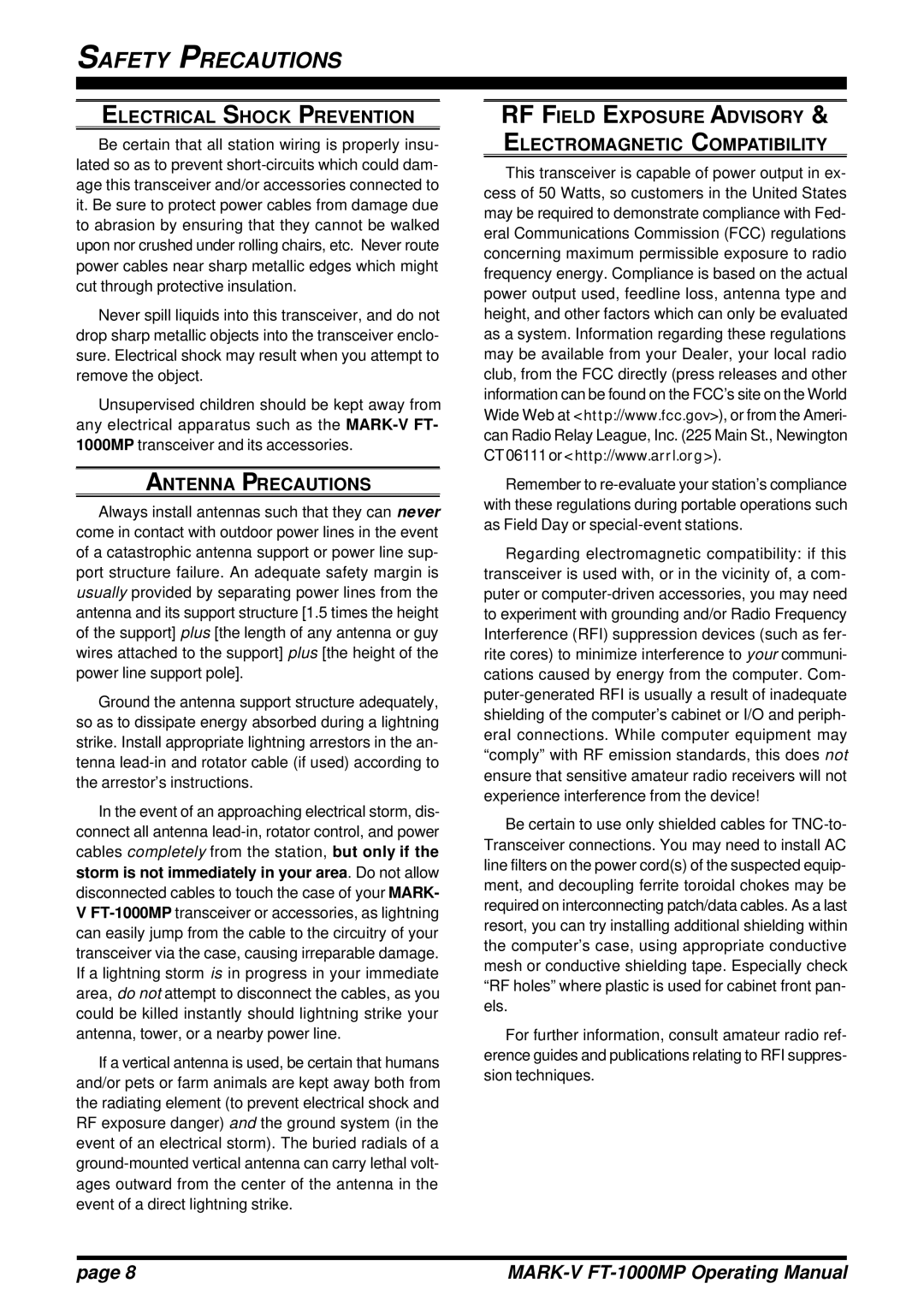
SAFETY PRECAUTIONS
ELECTRICAL SHOCK PREVENTION
Be certain that all station wiring is properly insu- lated so as to prevent
Never spill liquids into this transceiver, and do not drop sharp metallic objects into the transceiver enclo- sure. Electrical shock may result when you attempt to remove the object.
Unsupervised children should be kept away from any electrical apparatus such as the
ANTENNA PRECAUTIONS
Always install antennas such that they can never come in contact with outdoor power lines in the event of a catastrophic antenna support or power line sup- port structure failure. An adequate safety margin is usually provided by separating power lines from the antenna and its support structure [1.5 times the height of the support] plus [the length of any antenna or guy wires attached to the support] plus [the height of the power line support pole].
Ground the antenna support structure adequately, so as to dissipate energy absorbed during a lightning strike. Install appropriate lightning arrestors in the an- tenna
In the event of an approaching electrical storm, dis- connect all antenna
V
If a vertical antenna is used, be certain that humans and/or pets or farm animals are kept away both from the radiating element (to prevent electrical shock and RF exposure danger) and the ground system (in the event of an electrical storm). The buried radials of a
RF FIELD EXPOSURE ADVISORY & ELECTROMAGNETIC COMPATIBILITY
This transceiver is capable of power output in ex- cess of 50 Watts, so customers in the United States may be required to demonstrate compliance with Fed- eral Communications Commission (FCC) regulations concerning maximum permissible exposure to radio frequency energy. Compliance is based on the actual power output used, feedline loss, antenna type and height, and other factors which can only be evaluated as a system. Information regarding these regulations may be available from your Dealer, your local radio club, from the FCC directly (press releases and other information can be found on the FCC’s site on the World Wide Web at < http://www.fcc.gov>), or from the Ameri- can Radio Relay League, Inc. (225 Main St., Newington CT 06111 or < http://www.arrl.org >).
Remember to
Regarding electromagnetic compatibility: if this transceiver is used with, or in the vicinity of, a com- puter or
Be certain to use only shielded cables for
For further information, consult amateur radio ref- erence guides and publications relating to RFI suppres- sion techniques.
page 8 |
|
